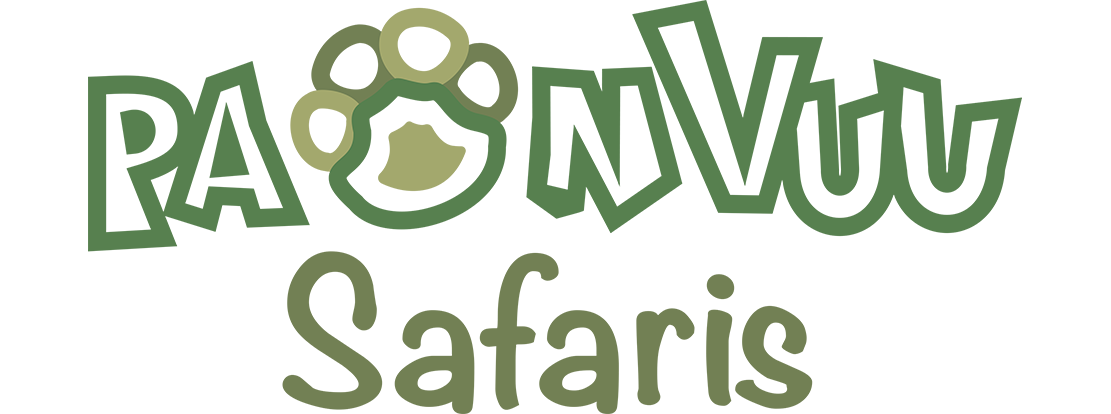Gorilla trekking in Uganda and Rwanda is a bucket-list adventure that promises an unforgettable encounter with one of the world’s most magnificent creatures, the mountain gorilla. These two East African nations offer an incredible opportunity to witness these gentle giants in their natural habitat, but preparation is key to ensuring a successful and enjoyable experience.
In this blog post, Paanvuu Safaris provides you with essential tips to prepare for your gorilla trekking adventure, along with insights into the trek’s difficulty and fitness requirements.
Preparing for Gorilla Trekking in Rwanda
-
Obtain Permits in Advance
Securing a gorilla trekking permit is the first step. Permits are limited and in high demand, so it’s advisable to book well in advance, sometimes up to a year ahead. Permits can be obtained through the Rwanda Development Board (RDB) or a reputable tour operator. -
Dress Appropriately
Rwanda’s Volcanoes National Park, where gorilla trekking takes place, can be chilly in the mornings and warmer later in the day. Dress in layers, including moisture-wicking clothing, long-sleeved shirts, and sturdy, comfortable hiking boots. A rain jacket is also recommended for potential rain showers. -
Pack Light
During the trek, you’ll carry a small daypack with essentials like water, snacks, a camera, and personal items. Keep your pack light as you’ll be navigating through dense forest terrain. -
Hire a Porter
Porters are available at the trailhead and are highly recommended. They can carry your daypack, assist you on challenging terrain, and provide valuable support. -
Stay Hydrated and Nourished
Bring sufficient water and energy-rich snacks to keep your energy levels up during the trek. -
Photography Etiquette
Remember to switch your camera to silent mode and disable the flash. Maintain a respectful distance from the gorillas when taking photos. -
Follow Your Guide’s Instructions
Listen carefully to your experienced guide’s instructions before and during the trek. They have valuable insights and are experts at tracking gorilla groups.
How Difficult is the Trek to See the Gorillas in Rwanda?
The difficulty of gorilla trekking in Rwanda can vary depending on factors like the location of the gorilla group, weather conditions, and the fitness level of the participants. Generally, it falls into one of three categories:
- Easy Treks: Some gorilla families are located relatively close to the trailhead, requiring minimal hiking. These treks are suitable for individuals with limited mobility or those seeking a less physically demanding experience.
- Moderate Treks: Most gorilla treks fall into this category. They involve moderate hiking through dense forest and uneven terrain. Participants should have a reasonable level of fitness and mobility.
- Challenging Treks: In some cases, gorilla groups may be located in more remote areas, requiring longer and more strenuous hikes. These treks are typically more challenging and may not be suitable for everyone.
The difficulty of the trek will be communicated by your guide, and you can discuss your preferences and abilities with them to ensure you are assigned to an appropriate group.
How Fit Do You Need to Be for Uganda Gorilla Trekking?
Uganda offers a slightly different gorilla trekking experience compared to Rwanda, primarily in Bwindi Impenetrable National Park and Mgahinga Gorilla National Park. Here’s what you need to know about fitness:
- Moderate Fitness: Uganda’s gorilla treks are generally moderate in terms of physical demand. However, the terrain can be challenging, with steep slopes and dense vegetation. You should be in reasonably good health, able to hike for several hours, and navigate uneven terrain.
- Age and Mobility: While there is no strict age limit, participants should be aware that the trek can be physically demanding. It’s essential to be able to walk comfortably on uneven paths and ascend and descend steep slopes. Elderly individuals or those with mobility issues may find some treks challenging.
- Altitude Considerations: In some cases, the trek may take you to higher altitudes. It’s essential to be aware of potential altitude-related issues, such as shortness of breath. Taking it slow and acclimatizing to the altitude is advisable.
- Porters are Available: Just like in Rwanda, hiring a porter in Uganda is highly recommended. They can assist with carrying your daypack and provide valuable support, making the trek more manageable.
In both Rwanda and Uganda, your guide and ranger team will ensure your safety and provide assistance as needed during the trek. It’s vital to communicate any physical limitations or concerns with them beforehand to ensure a safe and enjoyable experience.
In conclusion, gorilla trekking in Uganda and Rwanda is a remarkable adventure that is accessible to a wide range of travelers. With proper preparation, including securing permits, dressing appropriately, and maintaining a reasonable level of fitness, you can embark on this life-changing journey and witness the beauty and grace of mountain gorillas in their natural habitat.
Paanvuu Safaris reminds you that the effort you put into preparing for the trek is a small price to pay for the privilege of sharing a moment with these incredible creatures.
Contact us via info@paanvuusafaris.com









 Thank you for your feedback! We truly appreciate your input and will use it to improve your experience.
Thank you for your feedback! We truly appreciate your input and will use it to improve your experience.